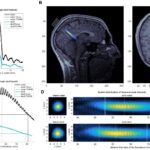2024-07-11 マックス・プランク研究所
 Cell-free system composed of interdependent metabolic (Cetch cycle, pink) and genetic (Pure, blue) levels that recursively interact with one another. Pure produces the missing enzymes for CO2 fixation (i.e. Epi and Ecm) by transcription and translation (TX-TL) of Epi and Ecm genes; Cetch utilizes such enzymes for synthesizing glycine from CO2, thus sustaining protein production. Enzyme abbreviations Epi, Ecm, and RNAP stand for methylmalonyl-/ethylmalonyl-CoA epimerase, ethylmalonyl-CoA mutase, and RNA polymerase respectively.
Cell-free system composed of interdependent metabolic (Cetch cycle, pink) and genetic (Pure, blue) levels that recursively interact with one another. Pure produces the missing enzymes for CO2 fixation (i.e. Epi and Ecm) by transcription and translation (TX-TL) of Epi and Ecm genes; Cetch utilizes such enzymes for synthesizing glycine from CO2, thus sustaining protein production. Enzyme abbreviations Epi, Ecm, and RNAP stand for methylmalonyl-/ethylmalonyl-CoA epimerase, ethylmalonyl-CoA mutase, and RNA polymerase respectively.
© MPI f. Terrestrial Microbiology/ Giaveri
<関連情報>
- https://www.mpg.de/22163540/0703-terr-a-motor-for-cell-free-metabolism-153410-x
- https://www.science.org/doi/10.1126/science.adn3856
部分的に自己合成する生化学ネットワークにおける翻訳と代謝の統合 Integrated translation and metabolism in a partially self-synthesizing biochemical network
SIMONE GIAVERI, NITIN BOHRA, CHRISTOPH DIEHL, HAO YUAN YANG, […], AND TOBIAS J. ERB
Science Published:11 Jul 2024
DOI:https://doi.org/10.1126/science.adn3856
Editor’s summary
All life must transform metabolites through enzyme-catalyzed reactions and transmit the information necessary to produce those enzymes for future generations. Synthetic biology systems are often limited to either a metabolic or genetic focus. Giaveri et al. combined two existing artificial systems, a carbon dioxide–fixing metabolic cycle and an in vitro transcription and translation platform, to create a complex hybrid system that can incorporate carbon dioxide–derived glycine into DNA-encoded protein products. When provided with the appropriate starting conditions, a droplet-confined system can self-regenerate by producing missing enzymes. This integrated metabolic and genetic biosynthetic system may be a useful system in which to study metabolic networks and could serve as a platform for additional metabolic modules. —Michael A. Funk
Abstract
One of the hallmarks of living organisms is their capacity for self-organization and regeneration, which requires a tight integration of metabolic and genetic networks. We sought to construct a linked metabolic and genetic network in vitro that shows such lifelike behavior outside of a cellular context and generates its own building blocks from nonliving matter. We integrated the metabolism of the crotonyl-CoA/ethyl-malonyl-CoA/hydroxybutyryl-CoA cycle with cell-free protein synthesis using recombinant elements. Our network produces the amino acid glycine from CO2 and incorporates it into target proteins following DNA-encoded instructions. By orchestrating ~50 enzymes we established a basic cell-free operating system in which genetically encoded inputs into a metabolic network are programmed to activate feedback loops allowing for self-integration and (partial) self-regeneration of the complete system.


